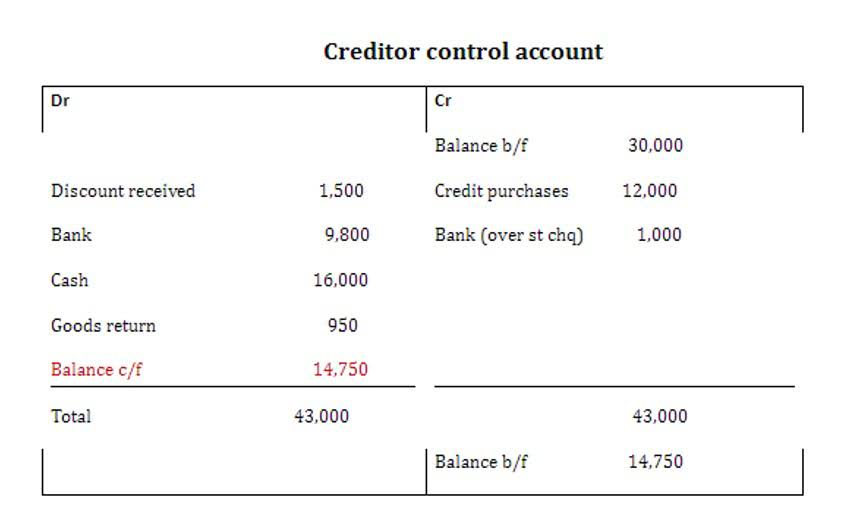
Cloud company Arista Networks (ANET) just announced its own earlier this month. Because a stock split doesn’t change the underlying value of your investment, you may not notice any more substantial changes than the number of shares in your investment account. The dividends paid by shares adjust proportionately following a stock split. In other words, you should receive the same amount of dividends after the split as you did before it.
- The end result is a doubling, tripling, or quadrupling of the number of outstanding shares and a corresponding decrease in the market price per share of the stock.
- Another reason a company might opt for a reverse split is to make its stock look more appealing to investors who may regard higher-priced shares as more valuable.
- This is because small investors may perceive the stock as more affordable and buy the stock.
- As an investor, the idea of “splitting” anything is probably not at the top of your list.
- Don’t let the change of price fool you into believing that your investment has lost value.
Submit Your Info Below and Someone Will Get Back to You Shortly.
For example, in a reverse 1-for-5 split, 10 million outstanding shares at 50 cents each would now become 2 million shares outstanding at $2.50 per share. As we’ve discussed, stock splits can have a positive effect on shareholders, but that doesn’t mean you should automatically buy the shares just because there’s a split. One reason is that it can make the shares more affordable for small investors. For example, if a company’s shares are trading at $200 each, it may be too expensive for some people to buy just one share. But if the company does a two-for-one split, then the price of each share will drop to $100 and more people will be able to afford to buy the shares.
- If you’re holding options during a stock split, you should carefully review how your contracts are affected.
- For example, if a company has 100 million shares outstanding and does a two-for-one reverse stock split, then the company would have 50 million shares outstanding after the split.
- The most common type of stock split is a forward split, which means a company increases its share count by issuing new shares to existing investors.
- What was once a self-fulfilling prophecy is now just an outdated tactic that may not be worth your time, effort, and risk.
- A stock split is used primarily by companies that have seen their share prices increase substantially.
Does the Stock Split Make the Company More or Less Valuable?
The strength of a company’s stock comes from its earnings, not the price of its stock. For example, suppose the shares of XYZ Corp. were trading at $20 at the time of the two-for-one split; after the split, the number of shares doubled, and the shares traded at $10 instead of $20. If an investor has 100 shares at $20 for a total of $2,000, after the split, they will have 200 shares at $10 for a total of $2,000. For example, in a reverse one-for-five split, 10 million outstanding shares at $0.50 cents each would now become 2 million shares stock splits are issued primarily to outstanding at $2.50 per share. To continue with the example, let’s say the shares were trading at $20 at the time of the 2-for-1 split; after the split, the number of shares doubles and the shares trade at $10 instead of $20. If an investor has 100 shares at $20 for a total of $2,000, after the split he or she will have 200 shares at $10 for a total of $2,000.
What is a reverse stock split?
This refers to how, retained earnings after a significant corporate event (stock splits and other company announcements), there’s still an effect even though, all things being equal, there shouldn’t be. This drift for forward stock splits means a slight bump in stock prices afterward. There are some changes that occur as a result of a split that can impact the short position. The biggest change that happens in the portfolio is the number of shares shorted and the price per share.
What should you expect when stocks split?
- 11 Financial may only transact business in those states in which it is registered, or qualifies for an exemption or exclusion from registration requirements.
- Choose CFI for unparalleled industry expertise and hands-on learning that prepares you for real-world success.
- A stock split occurs when a company increases the number of outstanding shares with a proportional decrease in the par or stated value.
- Thus, an existing investor’s pre-split price of stocks will remain the same post-split with an increased number of units.
- Primarily, companies announce a split when a long run-up is observed in their share prices.
A 3-for-1 stock split means that for every share an investor has, they will now have three shares. The combined value of those three shares would equal the value of what one share used to be. For example, if a stock was valued at $15 and there was a 3-for-1 split, each share would now be worth $5. When an investor shorts a stock, he or she is borrowing the shares, and is required to return them at some point in the future.

What happens to my shares if they undergo a stock split?

The ability for more people to buy a stock can bump up its price, which in turn may actually increase a company’s value, at least temporarily, Holden says. This could in turn fuel greater demand for the company’s shares, causing their value to rise and increasing the value of your portfolio. Learn about stocks that will split in 2024 and why a company might decide to do a stock split. Because there is no change in either the total stockholders’ equity or any of the individual components, it is not appropriate for a journal entry to be recorded at the time that a formal split is made.

Some brokers such as SoFi Invest®, Robinhood and Webull allow users to buy fractional shares, or a fraction of a share, so you aren’t forced to buy a whole share. “If your current stock is valued at $100 per share and there is a 2-for-1 split, you will have two shares worth $50 each,” explains Brian Stivers, investment advisor and founder of Stivers Financial Services. But when you look at the motivations behind a stock split, you’ll find it can get complicated.

A large stock dividend (generally over the 20-25% range) is accounted for at par value. While the forward split marks the increase in the volume of shares and decrease in their prices, the latter indicates a reduction in the quantity of shares and an increase in their prices. This can increase liquidity (the ability to trade the stock easily) and trading volume. However, a stock split doesn’t change the company’s value—it simply redistributes ownership into smaller, more https://www.bookstime.com/ affordable units. However, stock splits are still used by companies to make their shares appear more attainable to retail investors. These company actions also tend to signal management’s confidence in future growth.
A stock dividend is a payment made in additional shares based on the number of shares already owned, reflecting a distribution of earnings. Both increase the number of shares but have different implications and reasons. A reverse stock split is when a company reduces its outstanding shares by combining multiple shares into one, resulting in a proportionally higher price per share. This is the opposite of a forward stock split, where a company increases its share count while decreasing the price per share. In May 2011, Citigroup reverse split its shares 1-for-10 in an effort to reduce its share volatility and discourage speculator trading.

